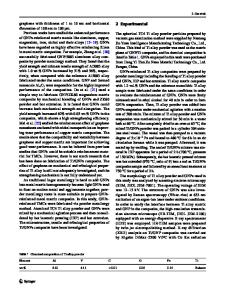Porosity, Microstructure, and Mechanical Properties of Ti-6Al-4V Alloy Parts Fabricated by Powder Compact Forging
- PDF / 4,938,466 Bytes
- 15 Pages / 593.972 x 792 pts Page_size
- 59 Downloads / 341 Views
TRODUCTION
TITANIUM and titanium alloys are widely used in aerospace, chemical, automobile, and biomedical industries due to their high specific strength, high fracture toughness, excellent corrosion resistance, and good biocompatibility.[1–6] However, the range of applications of titanium alloys can be much wider and the amount of usage can be much higher than the current level of around 100,000 tons per annum,[7] if the costs of titanium and titanium alloy mill products and shaped parts are significantly reduced. In order to reduce the costs of shaped titanium and titanium alloy parts, recently, more attention has been paid to produce titanium and titanium alloy near-net-shaped parts by powder metallurgy, including press and sintering,[8,9] metal injection molding plus sintering,[10,11] hot isostatic pressing[12,13] and powder forging.[14–18] Among these, powder forging is regarded as a cost effective way to produce titanium and titanium alloy parts with superior
MINGTU JIA and BRIAN GABBITAS are with the Waikato Centre for Advanced Materials, School of Engineering, The University of Waikato, Hamilton, 3240, New Zealand. DELIANG ZHANG is with the School of Materials Science and Engineering, Northeastern University, Shenyang, China. e-mail: [email protected] JIAMIAO LIANG is with the State Key Laboratory for Metal Matrix Composites, School of Materials Science and Engineering, Shanghai Jiao Tong University, Shanghai, 200240, China. Manuscript submitted July 15, 2016. METALLURGICAL AND MATERIALS TRANSACTIONS A
mechanical properties and high relative density (~100 pct).[14,16,17] Qiu et al.[16] have studied the densification levels and microstructure of four main parts (crank pin end, piston pin end, shank, and fork part) of titanium alloy connecting rods for internal combustion engines fabricated by powder forging. They found that the densification level increased with increasing the effective compressive strain, and the increase of cooling rate led to the change of microstructure from fully lamellar structure to a mixture of lamellar structure and a necklaces at colony boundaries. Similarly, the effective strain and cooling rate would vary with locations of the shaped parts made by powder forging, so it is expected that the porosity and microstructure would vary in different regions of titanium alloy shaped parts made by powder forging. It has been established that both porosity and microstructure can significantly affect the mechanical properties of titanium and titanium alloy parts.[19–21] To the best of our knowledge, it is likely that the mechanical properties of different regions in the same part would also vary. There has been no report of a systematic study on this aspect. Therefore, it is essential to investigate the variation of porosity, microstructure, and mechanical properties of different regions of titanium and titanium alloy near-net-shaped parts produced by powder forging in order to improve their metallurgical quality. In conventional powder forging process,[22–29] which involves powder compaction, po
Data Loading...











